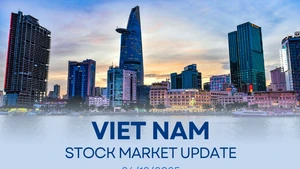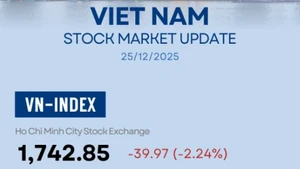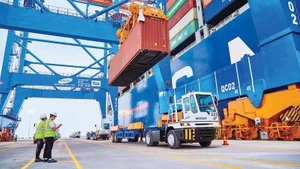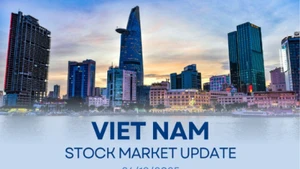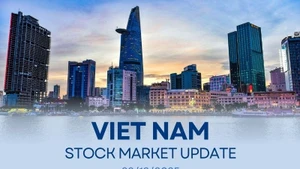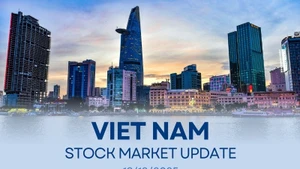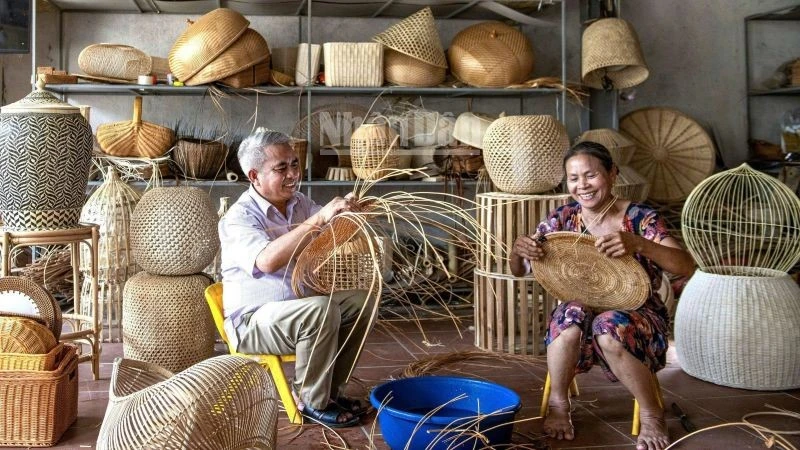"When the market fluctuates, sitting idle will cause you to miss the beat"
“A difficult market is exactly when we must pivot quickly.” This is the consistent viewpoint of Phan Minh Thong, Chairman of the Board of Directors of Phuc Sinh Joint Stock Company (SJC), throughout his leadership journey. In the context of ongoing volatility in global export markets due to inflation, geopolitical conflicts and shifts in trade policy by major economies, Phan Minh Thong has once again affirmed his philosophy of proactive and flexible business.
According to Thong, instead of downsizing production or waiting for signs of recovery, Phuc Sinh JSC chose a “counter-current” strategy, with a focus on improving product quality, promoting its brand, and expanding its customer base into new markets. From participating in international trade fairs to leveraging global e-commerce platforms, the Phuc Sinh team has continuously connected with, approached, and sought orders from potential partners.
Thanks to this proactive strategy, in the first five months of 2025, Phuc Sinh’s export turnover grew strongly, up 30–32% year on year, far surpassing the average growth rate of 5% in recent years.
As one of the leading enterprises in agricultural exports, particularly in two key commodities — pepper and coffee — Phuc Sinh JSC has long focused on improving product quality. As early as 2010, the company invested tens of billions of dong in sustainable development programmes aligned with international Environmental, Social and Governance (ESG) standards. By 2014, Phuc Sinh became one of the first Vietnamese companies to receive Rainforest Alliance certification, opening doors to selective markets such as Europe and North America.
“When the market fluctuates, sitting idle will cause you to miss the beat. We choose to create our own opportunities,” Thong affirmed. According to him, the temporary suspension of reciprocal tariffs by the US created a “golden space” for businesses, including Phuc Sinh, to ramp up orders and accelerate exports before possible new trade uncertainties arise.
Phuc Sinh is just one example of enterprises making positive contributions, helping total import-export turnover in the first six months of 2025 reach 432.03 billion USD, up 16.1% over the same period last year. Of this figure, exports reached 219.83 billion USD, up 14.4%; and imports reached 212.2 billion USD, up 17.9%. The trade surplus stood at 7.63 billion USD.
In June 2025 alone, export turnover reached 39.49 billion USD, down slightly by 0.3% from the previous month but up 16.3% year on year. Of this, the domestic economic sector contributed 8.64 billion USD (down 5.7% year on year), and the foreign direct invested sector reached 30.85 billion USD (up 24.4%). In the second quarter of 2025, export turnover reached 116.93 billion USD, up 18% year on year and 13.6% higher than the first quarter.
In the first six months of 2025, 28 export items recorded turnover exceeding 1 billion USD, accounting for 91.7% of total exports; of which, nine items exceeded 5 billion USD, contributing 72.3%. Key export groups included: processed industrial goods (194.28 billion USD, accounting for 88.4%), agro-forestry products (19.12 billion USD, 8.7%), and seafood (5.11 billion USD, 2.3%).
Conversely, import turnover in June reached 36.66 billion USD, down 6.1% from the previous month but up 20.2% year on year. In the second quarter, imports totalled 112.52 billion USD, up nearly 19% year on year. The six-month cumulative import figure reached 212.2 billion USD, of which the FDI sector accounted for about 65%, with a strong growth rate of 22.3%. There were 33 imported items with turnover above 1 billion USD, including six items exceeding 5 billion USD.
Production materials accounted for 93.7% of total import turnover, with a focus on machinery, equipment, and raw materials. Consumer goods reached 13.28 billion USD, accounting for around 6.3%.
In terms of markets, the US remained Viet Nam’s largest export partner, with turnover of 70.91 billion USD, followed by China and the EU. Viet Nam recorded a trade surplus of 62 billion USD with the US (up 29.1% year on year), 19 billion USD with the EU, and 1.2 billion USD with Japan. Conversely, it registered a trade deficit of over 55.6 billion USD with China, 14.6 billion USD with the Republic of Korea, and 7.5 billion USD with ASEAN.
Strategic restructuring must be prioritised towards proactiveness and sustainability
Viet Nam’s exports are showing positive signs. However, data shows that export turnover in June 2025 fell by 0.3% month on month, reaching only 39.49 billion USD.
In the coming time, the General Statistics Office (Ministry of Finance) recommends that Viet Nam’s import-export activities prioritise strategic restructuring towards a proactive, sustainable, and adaptable approach.
The General Statistics Office suggests continued diversification of export markets and exploration of new ones. Viet Nam should effectively leverage its free trade agreements (FTAs) to increase exports, while boosting trade with India, the Middle East, South Asia, Eastern Europe, and Africa. Businesses are encouraged to decentralise supply chains and expand cross-border e-commerce.
Tran Thanh Hai, Deputy Director of the Import-Export Department (Ministry of Industry and Trade), warns that a localised container shortage has already begun, not only in China or Viet Nam, but also in regional countries such as Indonesia, Thailand, and Malaysia. The reason is that businesses are attempting to secure containers to export goods to the US before reciprocal tariffs are implemented.
Hai recommended that businesses stay updated and coordinate closely with import-export partners. At the same time, they should be more cautious when signing contracts related to transportation, logistics, and delivery to minimise risks, especially amid unexpected situations like delayed ships or disruptions due to conflict.
According to Hai, state management agencies are closely monitoring developments in the logistics market to issue timely guidance and support for businesses. Nevertheless, enterprises should also consider alternative transport solutions. In particular, the intermodal rail route to Europe remains operational and represents a potential option.

